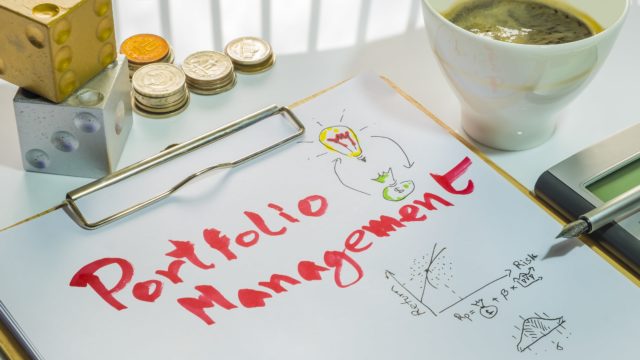1. Investing Is Hard Work

One reason why many people fail as successful investors is because they do not observe some basic investing golden rules. They think that investing is an easy way to make money simply and treat it like a get-rich-quick scheme, not to mention flout investment tips by playing the stock market like they would a casino.
Truly successful investors know that there is no free lunch in this world. You can never make money consistently without hard work. Investing is a job just like any other job. 99% of the work you do as an investor is the research before the buying and 1% is the actual buying, holding and selling of the stock opportunity.
2. Successful Investors Stay Diversified, But Not Too Much

When the Lehman Brothers filed for bankruptcy in late 2008 and Merrill Lynch sold itself to Bank of America to avert the same fate, thousands of investors in Singapore lost millions of dollars in mini-bonds that were sold to them by their bankers. News headlines recounted how many people, many of whom were retirees, lost their entire life savings after seeing their investments go to zero.
While the banks are now under fire for misleading their customers that these mini-bonds and structured notes were very safe and “capital protected”, I believe that these investors should also take some responsibility for committing the ultimate mistake, putting all their eggs in one basket.
No matter how great or how safe any investment may seem, never, ever put all your money in one security. In fact the way you allocate your funds across different assets will make a big difference to the risk you take to make potential returns. You should divide your money between index ETFs, value stocks, fixed deposits/cash equivalents and property.
At the same time, you also don’t want to divide your money between too many different investments (more than 10-12). Instead of reducing your risk, it may have the reverse effect of increasing it. When you take on too many investments, you will not be able to spend enough time to understand, study and monitor each one well enough to make the right decisions. In fact, Buffett once remarked that the people who buy everything and diversify too much do so to protect themselves against their own ignorance.
3. The Market Is Too Dynamic For Absolutes

The reason you should never put all your money in any kind of investment is because the stock market is too dynamic for absolutes. There is no investment strategy that can guarantee you profits all of the time. There is no investment expert who is right all of the time.
No matter how much work you do, how great your investing golden rules information is and how perfect the numbers look, things can go wrong that can never be predicted!
In fact, even the very best and successful investors and traders in the world don’t make profitable investments all of the time. If you study the trades, you will realise that they will be right and make money 6-7 out of 10 times at the most! What makes them profitable is their consistency in applying their strategies and their ability to control their losing trades. In fact…
4. It Is Not How Much You Make As A Successful Investor, It Is How Much You Lose
George Soros, one of the world’s top traders and successful investors once remarked:

Soros is often regarded as a genius for being able to make correct bets on market directions. In 1977, he made billions of dollars shorting the British Pound, almost breaking the Bank of England However, if you study his moves, you will find that he makes as many wrong predictions as he does correct ones. The only difference is that when he realises he made a mistake; he gets out of the market and minimises his losses. When he is right, he stays in the market, riding his investments to their fullest potential.
So, watch your investments closely and have the discipline to sell and cut your losses when you realise that you have made a mistake or when new data emerges that makes your investments no longer good ones.
5. Using Automated Stop-Losses
One of the best tools you can use if you are afraid that you may not have the discipline to constantly monitor your investments is a Stop-Loss. A Stop-Loss is an order that an investor can place with the broker to protect his capital – just in case the investment falls below a certain tolerance limit.
For example, your $1,000 stock might drop to $800, and you might be worried it could plunge further. While you wait to see if it might pick up again, you could set an automatic order to sell just in case it drops to $700. It is somewhat like an automatic ejection seat.
This is useful for many reasons. This includes the probability that you would not have time to constantly monitor the markets and that it is a form of disciplined planning. Not everyone likes using Stop-Losses and not many do. But you should consider its value; would investors have lost as much during the market collapse in 2008 if they had stops in place?
Although it is commonly called a Stop-Loss, the Stop is also a tool to protect profits. It can prevent your gains from getting completely wiped out in a plunging market.

Remember that you have no idea where the next market top or crash is. It could well happen before your investment realises its intrinsic value.
In such a situation, you may not have considered an acceptable exit on your investment when a sell-off catches you off guard. Before you can react, you would have lost a fair portion of your profits. Your psychology would then start to play on your common sense. The most natural and common reaction is to hang on to the investment in the hope of getting back that loss. Unfortunately that often never happens when a market begins its bear run. And it is for this reason that even wealthy investors lose millions during a bear market.
The simple practice of placing stops and knowing when to raise the stop level will save you a lot of agony later. It will also put discipline into the way you invest. Best of all, it removes the need to battle your fear and/or greed when observing investing golden rules.
Check out our free starter course by Piranha Profits and learn how to get the edge to dominate in any market condition!



submit your comment